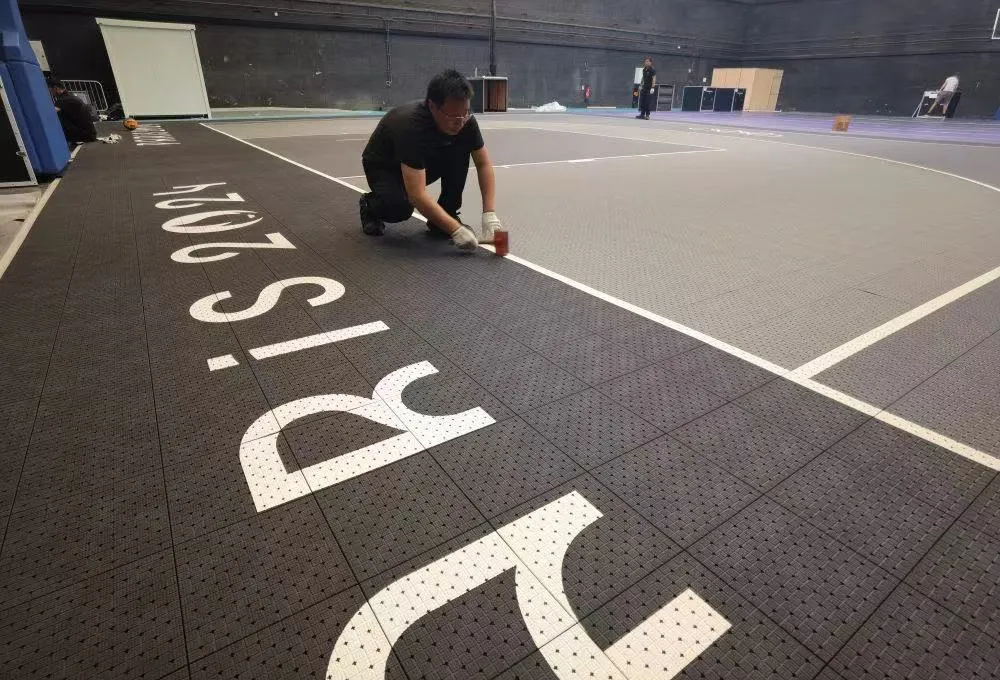Aug . 12, 2024 15:14 Back to list
Guidelines for Installing Basketball Floors to Ensure Optimal Performance and Safety Standards
The Importance of Basketball Floor Installation
Basketball is a sport loved by millions around the globe, played in gyms, schools, and outdoor courts. One of the essential elements that can significantly impact a game is the basketball floor itself. Proper basketball floor installation is not just about aesthetics; it plays a crucial role in athletic performance, safety, and overall experience for players.
Choosing the Right Flooring Material
The first step in basketball floor installation is selecting the right material. The two most common types of flooring used for basketball courts are hardwood and synthetic surfaces. Hardwood floors are traditional and provide excellent performance, including superior traction and shock absorption. They are often preferred in professional settings, such as NBA arenas and collegiate gyms, where the quality of play is paramount.
Synthetic flooring, on the other hand, has gained popularity due to its versatility and durability. Made from materials such as vinyl or rubber, synthetic surfaces can withstand heavy foot traffic and adverse weather conditions, making them ideal for outdoor courts. Moreover, they can be easier to maintain than hardwood floors, making them a practical choice for community centers and schools.
The Installation Process
Once the flooring material is selected, the next step is installation. It’s essential to have trained professionals handle this process to ensure that the court meets the necessary standards for play. The installation begins with a thorough assessment of the subfloor, ensuring it is level and free of any debris or moisture that could affect the flooring.
For hardwood floors, acclimatization is crucial. The wood needs to be kept in the environment where it will be installed for several days to prevent warping or shrinking after installation. After acclimatization, the installation involves laying down a vapor barrier, followed by plywood underlayment, and finally, securing the hardwood planks.
basketball floor installation

In contrast, synthetic surfaces often require a different approach. They may come in rolls or tiles and need to be laid down with adhesive to prevent shifting. The installation must be precise, as even a minor misalignment can impact playability and visual aesthetics.
Importance of Maintenance
Once a basketball floor is installed, maintenance becomes critical to ensure longevity and continued performance. For hardwood floors, regular cleaning to remove dust and dirt is essential, as these can cause scratches and wear down the finish. Additionally, periodic refinishing is necessary to maintain the surface’s integrity and appearance.
Synthetic surfaces require different care. They should be cleaned with appropriate cleaning agents that do not damage the material. Inspecting the court regularly for signs of wear, such as cracks or peeling, is essential to prevent further damage.
Safety Considerations
Safety is a paramount concern when it comes to basketball floor installation. The surface should provide adequate traction to prevent slips and falls. An ideal basketball floor should offer a balance between firmness for performance and cushioning to reduce the risk of injuries. Proper installation also includes ensuring that the edges are smooth and free from tripping hazards.
Conclusion
Investing in quality basketball floor installation is crucial for enhancing the experience of players and ensuring safety during play. Whether opting for hardwood or synthetic surfaces, careful consideration and professional installation will pay off in the long term. With proper maintenance, a well-installed basketball court can provide countless hours of enjoyment and competition, fostering community spirit and athleticism for years to come.
-
Wood Sports Flooring Enhanced by GPT-4-Turbo | Top Performance
NewsAug.02,2025
-
Sport Court Tiles with AI Innovation | Durable & Safe
NewsAug.01,2025
-
Vinyl Carpet Flooring | Durable & Waterproof Design
NewsJul.31,2025
-
Premium Basketball Board Stand with GPT-4-Turbo AI
NewsJul.31,2025
-
Premium Maple Flooring for Gyms & Homes | PVC & Vinyl Options
NewsJul.30,2025
-
Premium Outdoor Basketball Court Tiles for All Weather Use
NewsJul.30,2025

